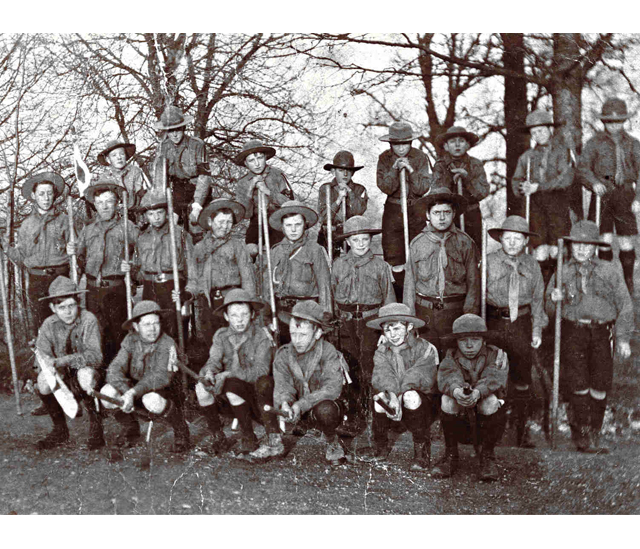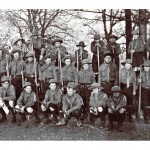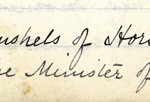Read this article to learn about why children gathered conkers during the First World War.
On 30 January 1917, Mr Haylock the headmaster at Willingdon School wrote an entry in his school’s: ‘Sent off today 3 bushels of horse chestnuts gathered by children for the Minister of Munitions.’
Over the previous weeks there were notes in the Log that the children had been out in the parish during the school day collecting conkers as part of the war effort. Many of the schoolboys also belonged to the 1st Ratton Scout Troop founded by Lord Willingdon and the scouts were also seen around the parish busily searching in the grass under the horse chestnut trees and filling boxes and baskets with conkers. Once collected they brought them back to the schoolroom to removed the green shells, leaving just the nuts. These were bagged up in sacks, put on a hand cart and wheeled off to Hampden Park Station ready for collection and transportation by train to London and from there to secret locations.
But why were children gathering conkers and why was there so much secrecy around it?
During the First World War, Britain was faced with shortages to various chemicals and components that were useful in making ammunition. In order to keep the army supplied and armed inventive solutions to these shortages were sought.
Research showed that conkers contained a key chemical called acetone which could be used o make explosives. So, when the Ministry of Munitions, who were in charge of all ammunition production, ordered the collection of conkers, across the country, to help make ammunition. School headmasters were urgently directed to send out pupils during the school day to collect as many conkers as they could find. Vast quantities of conkers were collected, weighed, bagged and sent off to collection centres. Perhaps more were collected than anticipated as there were reports of sacks of conkers left rotting on station platforms because there was not enough trains to transport them all.
The schools were paid 7 shillings and 6 pence for each hundredweight of conkers collected but a veil of secrecy surrounded the reason why the children were actually collecting them. A question was even asked in Parliament but the answer given simply stated that they were required for “certain purposes”. It was said this was for fear that the Germans would discover this ingenious method of acetone production. No one would have thought that the humble conker could play a part in winning the war. Production continued until July 1918 but by the autumn of that year conkers had returned to their normal role, firmly threaded on the end of a string ready for small schoolboys to play their annual matches.
Questions
1) Why chemical was found in conkers?
2) Who initially ordered the collection conkers?
3) Where did children go looking for conkers?
Pictures
- Willingdon Ratton Scout Troop 1916 – Image courtesy of Rosalind Hodges
- Log book entry conkers – Image courtesy of Rosalind Hodges
Click here to download a copy of this resource: First World War – Children gathering conkers – students










